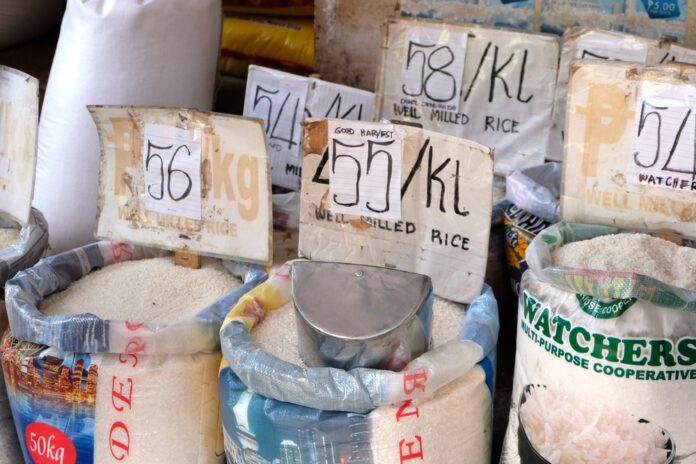The NEDA Board, chaired by President Ferdinand Marcos Jr., has approved the reduction of tariff on rice to 15 percent from 35 percent to substantially lower the cost of the staple and ease its impact on inflation, whose elevated level has kept the central bank from cutting interest rates to help spur greater economic activity.
Economic Planning Secretary Arsenio Balisacan told reporters at a news conference in Malacanang on Tuesday, a day after the NEDA Board meeting, that the reduced tariff on corn, pork and mechanically-deboned meat was maintained while the tariff cover on other agricultural products such as onions, shallots, garlic, broccoli, carrots, cabbage, lettuce, sweet potatoes, cassava, coffee substitutes, complete feeds, and feed preparations were retained.
“For rice, one of the most critical components of Filipino households’ consumption baskets, the NEDA Board agreed to reduce the duty rate to 15 percent for both in-quota and out-quota rates from 35 percent until 2028. This decision aims to lower the price of rice further and make it more affordable,” said Balisacan.
He said that based on the latest inflation report of the Philippine Statistics Authority in the past three months, rice contributed about two percentage points or over 50 percent to headline inflation.
“Reducing rice tariffs is expected to bring down rice prices for consumers while supporting domestic production through tariff cover and increased budgetary support to improve agricultural productivity, especially as global rice prices remain elevated. Upward price pressures for rice are driven by the effects of the El Niño phenomenon that are felt worldwide, as well as increasing demand given our steadily growing population and economy,” he said.
Balisacan said that even at the reduced tariff level, the rice sector continues to enjoy comparatively high tariff protection from competitive imports as the tariff is higher than for the 90 percent of the total 11, 484 tariff lines under the ASEAN Harmonized Tariff Nomenclature 2022.
Duties collected on imported rice are returned to rice farmers affected by the liberalization of grain importation under the Rice Tariffication Law in the form of subsidy and other financial support to enhance rice farmer competitiveness. The RTL originally envisioned a support package of P10 billion a year to cover mechanization, provision of better seeds, training new technologies and other financial assistance.
Balisacan said extensive consultations were conducted by the Committee on Tariff and Related Matters in recommending the recalibration of the tariff rates until 2028.
“This new multi-year tariff schedule aims to help our economy achieve and balance several critical policy objectives. The multi-year horizon seeks to promote transparency, predictability, and policy stability. It will enable our domestic industries to undertake medium- to long-term planning to enhance productivity and competitiveness, facilitate trade, and contribute to favorable outcomes in international trade agreements while ensuring consumer welfare and protection, especially in the near term as we still confront upside risks to inflation,” he said.
President Marcos will soon issue an executive order that will implement the new tariff schedule.







